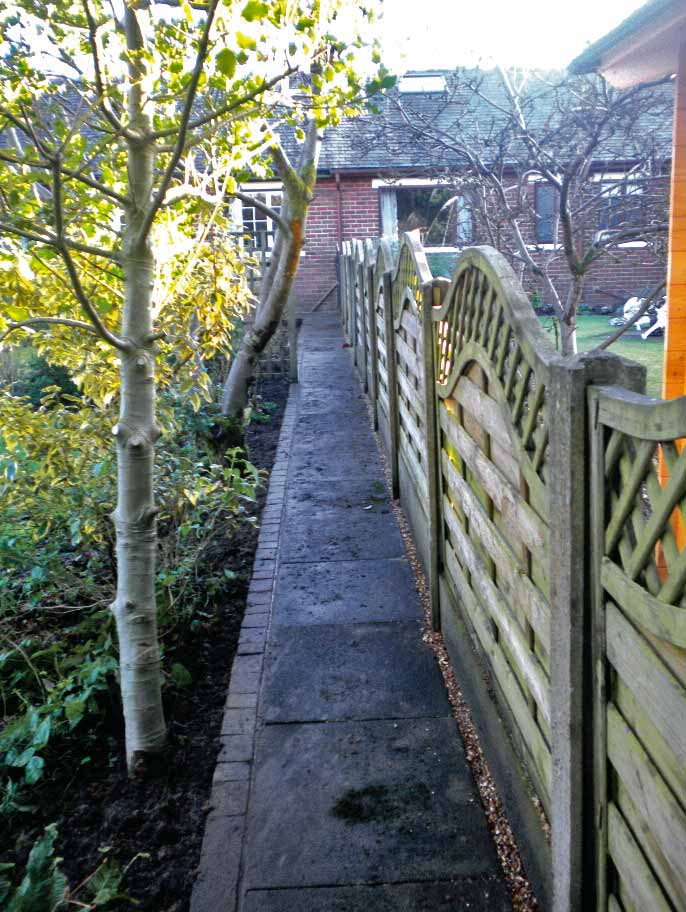
War on Weeds | Gardening with Geoff Moss
by Geoff Moss
Welcome to a third year of my gardening column with Northern Life, so if you are a new reader, don’t worry we are exploring various topics throughout each year and this year we will be putting the magnifying glass on gardening techniques. If you are of course a regular reader, welcome back and please continue to support me as it is much appreciated but you can also look forward to expanding your gardening knowledge.
So without further ado we will get started on this edition’s topic which is ‘weeding’, often a black word in a gardeners’ dictionary and certainly the bane of most gardeners’ lives. This is why I thought it would be a good starting point, so we are going to look at the main method of reducing this most knotty problem in a flourishing garden which will be: Identify the weeds, plan of attack, methods of removal and of course methods of preventing their return.
- Before
- After
Identifying Weeds
There are three definitions of a weed which are as follows:
- A plant in the wrong place
- A plant that is more vigorous than those surrounding it and therefore poses a threat to the surrounding plants
- A plant that propagates itself at such a rate that it becomes a threat to surrounding plants.
So this means plants that would-be desirable plants can become weeds in the right situation. However, there are many weeds that are easily recognisable as such and there are several that are particularly difficult to manage so we will look at methods to tackle them later in the article.
The six garden ‘nasties’ are – dandelions, docks, couch grass, ground elder, mare’s tail and bindweed, which are all perennial plants i.e. they die down in winter and grow again the following year. There are of course other perennial weeds e.g. nettles, creeping buttercup, willow herb, but they do tend to be easier to manage or are not as common in gardens and therefore don’t go on the list.
There are also other types of weeds that are annual or even ephemeral which are plants that last one year or plants that propagate many times a year respectively. These are weeds such as hairy bittercress, shepherd’s purse, chickweed, rosebay willowherb and many others. To detail how to identify all these weeds specifically would take much too long. However, most are commonly recognisable and if you struggle they can be found in picture form in wildflower books or online. The identification we do need to look at is the type of weed and how they grow so the first thing to look at is the two main types.
If the weeds in your garden die down in winter and grow again in spring they are a perennial weed. Likewise if they grow quickly and die off in winter like bedding plants do then the weeds are annual.
Next, you should dig a few up and look at the roots. Some will have a single or a few large straight roots which are ‘tap’ roots (dandelions and docks have these), some will have many small hairy
like roots which are ‘fibrous’ roots (shepherds purse and hairy bittercress have these) and others will have long string-like roots which are known as ‘runner’ roots (bindweed, couch grass and ground elder have these), so once you know what type of weeds and particularly roots you are dealing with you can move on to removing them.
Plan of Attack and Methods of Removal
Once you know what type of weeds you have and how they grow you need to make a note of where they are in the garden, that is, are they in a patio, a lawn, or the borders; also what is their population spread, so are they all over your garden or do they just occupy one patch? Or are they in a few areas but in groups?
Finding out these two facts will help immensely with effective removal and control of the weeds. For example, if you have dandelions growing in your patio, lawn and borders you will need to consider a few different methods of emoval and control, whereas if you have a patch of nettles growing in your borders or shepherd’s purse growing in the cracks of your patio there is only one
method of removal and control required.
There are two main methods of removing weeds – chemical or physical. Chemical is as it suggests using weedkillers of different sorts depending on whether it is on your patio, lawn or borders.
Physical is also what it suggests as in using your hands or an implement to remove the weed physically.
If you choose to use a chemical, be sure that it is one that will kill the type of weeds you have and that it is correct for the area you are using it on; a path and patio weedkiller will do a lot of damage to your lawn.
Warning: watch out for ‘drift’ where the chemical spray drifts in the wind to other plants; it can be the cause of damage or death to other desirable plants.
However, the correct choice of weedkiller can pay dividends in removing difficult to reach weeds so choose carefully.
If you choose the physical method then cater your approach to the type of weeds you are dealing with. Annual weeds will need hoeing or pulling out, a dandelion or dock will need a fork to remove the ‘tap’ roots, and couch grass, ground elder, bindweed and other weeds with runner roots need a methodical approach of digging or forking through the soil to remove all the root you can find.
I’m afraid mare’s tail is the most notorious, and the only method I have found is to keep pulling it as you see it as this removes it from sight but its roots are not only difficult to find, they are even worse to remove.
Methods of Prevention
There are three main methods of controlling weeds – chemical, cultural and physical.
Chemical, as we discussed earlier, needs to be specific and well executed but used carefully it can be an effective way of controlling weeds in difficult to reach places. Cultural is using other plants or gardening techniques to prevent weeds from getting a foothold – for example larger plants will block out light to a border to prevent weed growth, and regular hoeing will disturb the soil surface enough to stop weed seeds from growing.
Physical is using methods such as membrane or sterile mulches to provide a barrier over the soil surface to prevent weeds from growing; a sterile mulch would be materials like bark, gravel or slate chippings.
I hope this has given you an insight into dealing with weeds in your garden, so join me in the next issue as we put the magnifying glass on that most common occurrence for gardeners – pruning.






